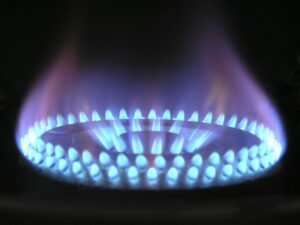Why Does Bread Turn Brown in the Toaster?
The chemistry of crunch, color, and breakfast.
It starts with a slice of bread — soft, pale, quiet.
You slide it into the toaster, press the lever, wait…
And then: crunchy golden magic.
The surface turns brown.
It smells amazing.
It tastes even better.
But what actually happens to bread in a toaster?
Why does it change color?
Where does the flavor come from?
And what’s going on in that short moment between “still soft” and “burnt brick”?
The answer lies in a delicious bit of chemistry called the Maillard reaction — one of the tastiest science experiments ever happening right in your kitchen.
First Things First: Bread Is Mostly Starch, Sugar, and Protein
Even before you toast it, bread is already a complex mixture.
It contains:
- Starches (from flour)
- Proteins (like gluten)
- A little sugar
- And tiny amounts of moisture
At room temperature, these things sit quietly.
But when you add heat, the molecules begin to move, change, and react — which is when breakfast gets interesting.
Enter the Maillard Reaction (Say: “MY-yard”)
The Maillard reaction is a special kind of chemical reaction that happens between sugars and proteins when heat is applied — typically above 140°C (about 285°F).
Here’s how it works:
- Heat causes the sugars and amino acids (the building blocks of proteins) to break down
- They recombine into new compounds — hundreds of them!
- These new compounds give toasted bread its brown color, crispy texture, and mouthwatering aroma
This isn’t just toasting — it’s a cascade of flavor creation.
In fact, the Maillard reaction is also what gives:
- Seared steaks their brown crust
- Roasted coffee its deep color and smell
- Baked cookies their golden edges
Without it, food would be dull, pale, and pretty boring.
Why Is It Called the Maillard Reaction?
The Maillard reaction is named after Louis-Camille Maillard, a French chemist and physician who first described the process in 1912.
Maillard was studying how amino acids (building blocks of proteins) react with sugars when heated. His work was originally focused on biology — he wanted to understand how proteins degrade in the human body, especially in relation to aging and disease.
But as it turned out…
He had also uncovered the science behind why food browns when it cooks.
Although he didn’t fully explore its role in flavor and cooking, later food scientists built on his discovery. By the mid-20th century, the term “Maillard reaction” became the standard way to describe non-enzymatic browning — the process responsible for everything from golden toast to a sizzling steak crust.
Is This the Same as Burning?
No — but it’s close.
The Maillard reaction is about controlled browning.
But if the heat goes too far — or the bread stays in the toaster too long — another reaction kicks in: carbonization.
That’s when organic molecules break down into carbon.
The result? Black, bitter, burnt toast.
So when you’re making toast, you’re walking a thin line between culinary genius and charcoal disaster.
Why Toast Feels Dry and Crunchy
As the bread heats up, its moisture evaporates — which is why toast is drier than bread.
This dryness is key. Without it, the crust wouldn’t crisp, and the Maillard reaction wouldn’t happen as richly. That’s also why toast softens if left out too long — it reabsorbs moisture from the air.
That crispy crack when you bite into a perfect slice of toast? That’s water being pushed out, sugars reshaping, and proteins transforming — all at once.
Still Wondering?
- Why does white bread toast faster than whole grain?
- Can you toast food without a toaster?
- What happens if you refrigerate toast after it cools?
Want to Unlock More Edible Experiments?
Our is filled with delicious mysteries, clever questions, and fun facts about the world around (and inside) your breakfast — from bubbling soda to the science of butter.
Because sometimes, the best science lesson is right on your plate.



